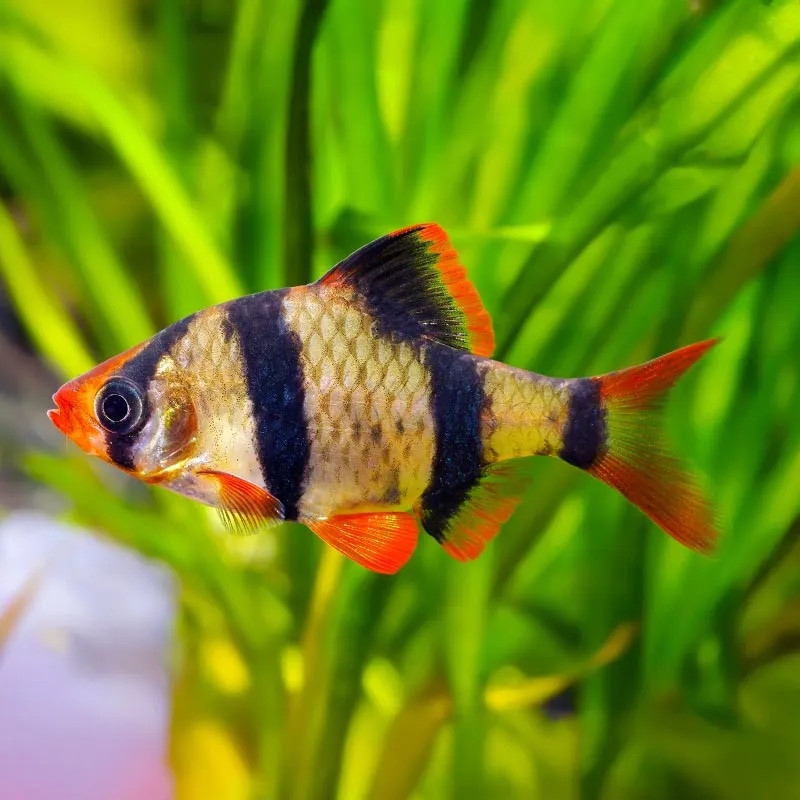Stocks Available
TINFOIL RED TAIL
SKU:120478
BARBUS SCHWANEFELDI
1-2 INCH

Stock Available
Introduction: Species: Tiger Barb (Puntigrus tetrazona) Common Names: Tiger Barb, Sumatra Barb Natural Habitat: Native to Southeast Asia, particularly found in the rivers and streams of Sumatra and Borneo, thriving in areas with dense vegetation. Physical Characteristics: Appearance: Recognized for its distinctive body shape and coloration, featuring a gold or yellow body adorned with bold black vertical stripes. Size: Typically grows up to 2-3 inches (5-8 cm) in length. Lifespan: Average lifespan of 5-7 years when cared for properly. Habitat Requirements: Tank Size: Minimum of 20 gallons for a small group; larger tanks are recommended for schools of 6 or more. Water Conditions: Temperature: 74-78°F (23-26°C). pH: 6.0-7.5. Aquascaping: Provide plenty of swimming space along with hiding spots using plants, driftwood, and rocks. Diet: Primary Diet: Omnivorous; feeds on small insects, crustaceans, and plant matter in their natural habitat. Supplemental Feeding: Offer high-quality flakes or pellets, supplemented with live or frozen foods such as brine shrimp, bloodworms, and daphnia. Feeding Frequency: Feed small amounts 1-2 times a day to maintain proper nutrition. Compatibility: Temperament: Generally peaceful but can be semi-aggressive, especially if kept in smaller groups; best kept in schools of at least 6 to reduce aggression. Suitable Tank Mates: Compatible with other peaceful community fish of similar size, such as rasboras, danios, and other barbs. Incompatibilities: Avoid keeping with slow-moving or long-finned species, as they may be nipped at or bullied. Care Level: Difficulty: Moderate; requires stable water parameters and a well-maintained environment. Health Monitoring: Regularly check for signs of disease, particularly fin rot and stress-related issues. Breeding: Breeding in Captivity: Breeding is possible in a separate tank; they are egg scatterers and do not exhibit parental care. Spawning: Requires fine-leaved plants for the eggs to settle; adults should be removed after spawning to prevent them from eating the eggs. Economic Considerations: Market Demand: High demand among aquarium enthusiasts for their vibrant appearance and active nature. Wholesale/Retail Pricing: Generally affordable, with prices varying based on color and breeding status. Sustainability and Conservation: Wild Population: Generally stable; however, habitat destruction poses threats. Aquaculture Efforts: Widely bred in captivity, helping reduce pressure on wild populations. Regulations: Compliance with local regulations concerning fish trade is essential. Conclusion: The Tiger Barb is a lively and striking addition to freshwater aquariums, appreciated for its dynamic behavior and vibrant coloration. Their social nature makes them ideal for community tanks, provided they are kept in adequate numbers to minimize aggression. With proper care and attention, Tiger Barbs can thrive, offering endless entertainment to aquarium enthusiasts.
Data sheet
16 other products in the same category:
Customers who bought this product also bought: